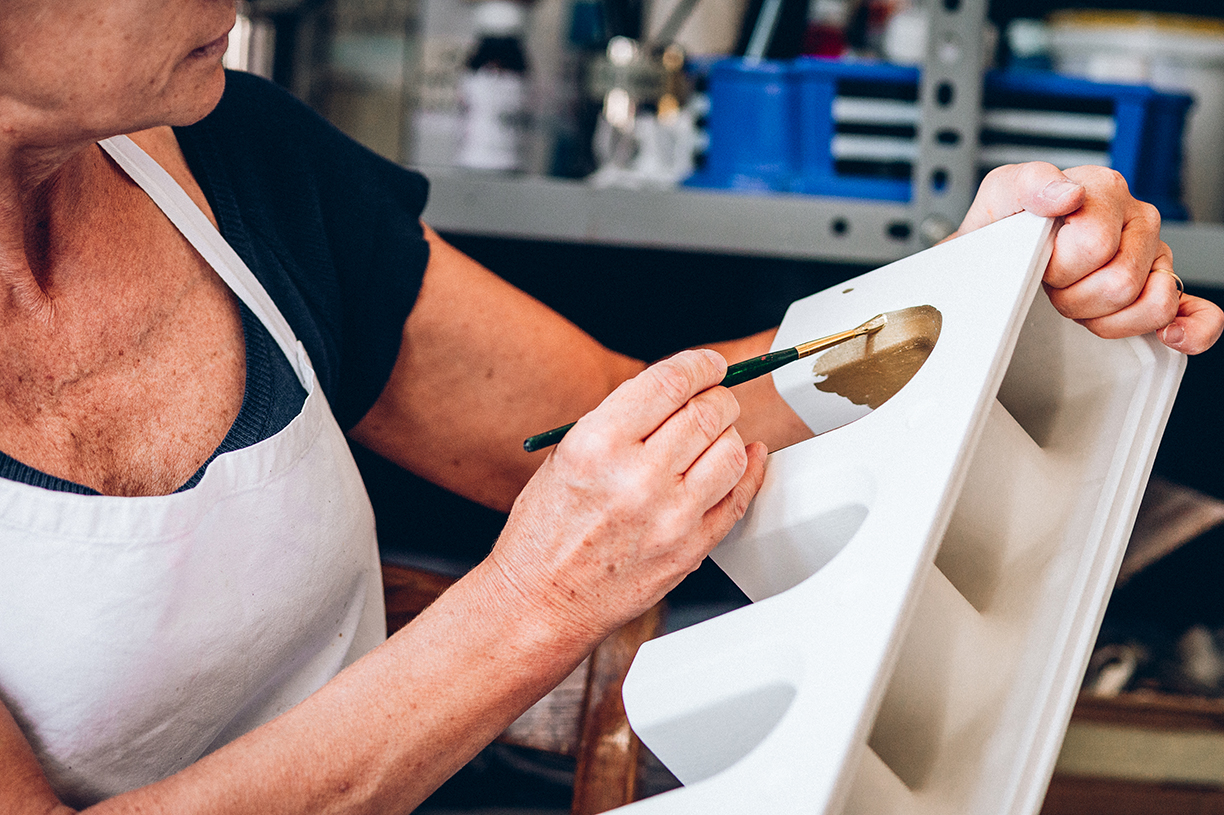
Photo by Giacomo Maestri.
New design brand LATOxLATO, founded by the young architects Francesco Breganze de Capnist and Virginia Valentini, presents its first collection of furnishings and objects that strives to tell a story of true passion for Italian design. Exclusively made in Italy, LATOxLATO uses the finest materials and refined techniques, all built on a search for the best artisans and craftspeople.
“LATOxLATO comes from the wish of bringing the artisans’ knowledge passed down across generations to the public,” say designers Breganza de Capnist and Valentini, “and make people realize that in Italy we still have a great tradition of true masters of the art that mold one piece at a time with their hands … Our mission is to show the consumer everyday objects in a different way from the one they are used to seeing them, freed from the constraints of the usual trends through the constant dialogue between art, aesthetics and functionality.”
The duo is usually inspired by day to day life, taking their personal memories as well as the architecture of Italy and transposing generalized design concepts into household pieces. For those looking to outfit their home, both designers say that these pieces help to “tell a story about [the] owner.”
“Each product has a unique and recognizable identity and is meant to embellish its new home and also bring value to its new owner. The goal is to give the consumer the chance to own a very unique piece that tells a story about him, what he likes and what are his dreams.”
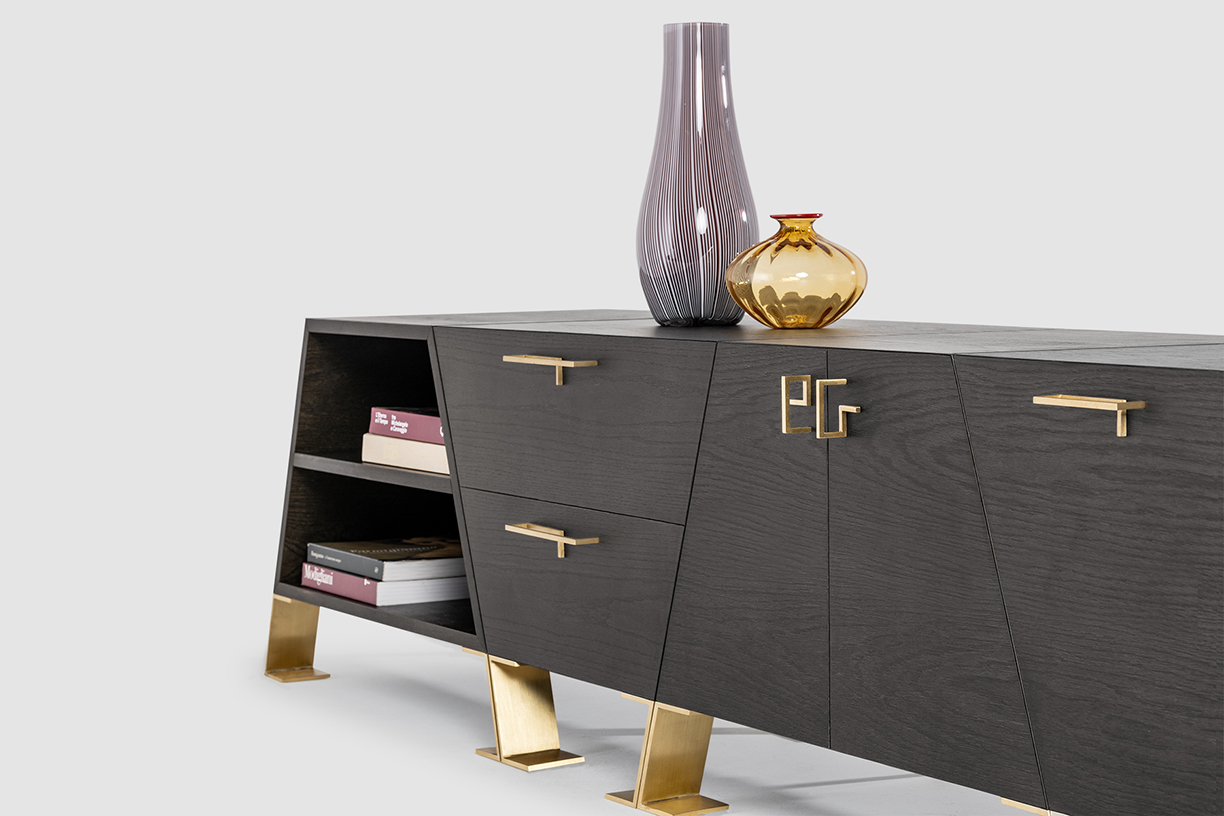
There are several pieces in the collection, varying in look and purpose. The Fourmosa storage chest draws on the clean formal lines of classic Italian design from the 1950s, updated for the modern age.
The piece is in varnished oak, with masterfully carved sharp edges bringing a sense of continuity to the surface. Designed to fit together in infinite combinations, these pieces create a dynamic, personalized piece that can even be expanded over time.
The trapezoidal modules easily lend themselves to various free combinations, without the use of joints.
Photo by Matteo Imbriani.
1950s design also provided inspiration for Aracne, an unconventional coffee table with an unexpected eight-legged silhouette. Its round glass top seems to float atop the elegant zoomorphic structure, solid and airy at the same time.
Its eight wooden supports, with rounded edges that allow the top to nestle into place with a natural elegance, create an evocative visual rhythm, interacting with its surroundings by projecting delicate threads of shadow into the light.
Precise woodworking and organic design make Aracne an elegant presence full of personality.
Photo by Giacomo Maestri.
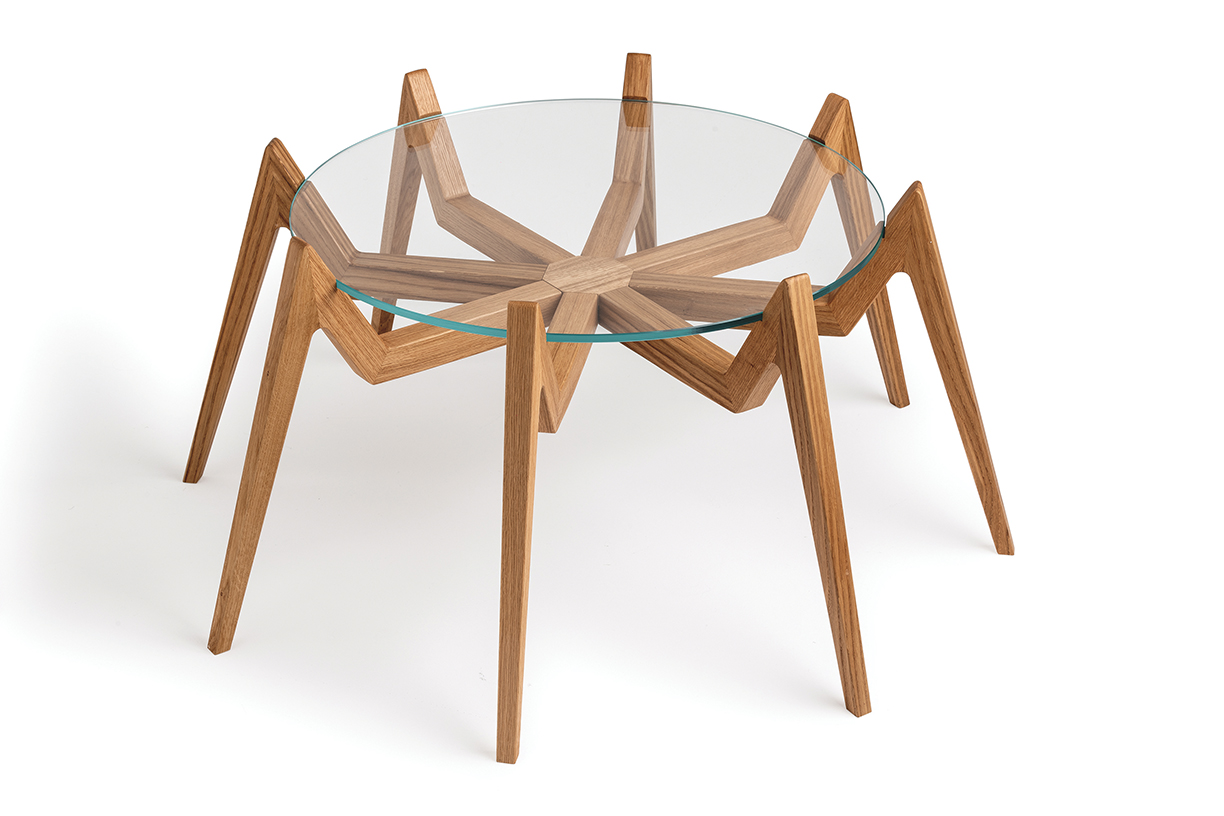
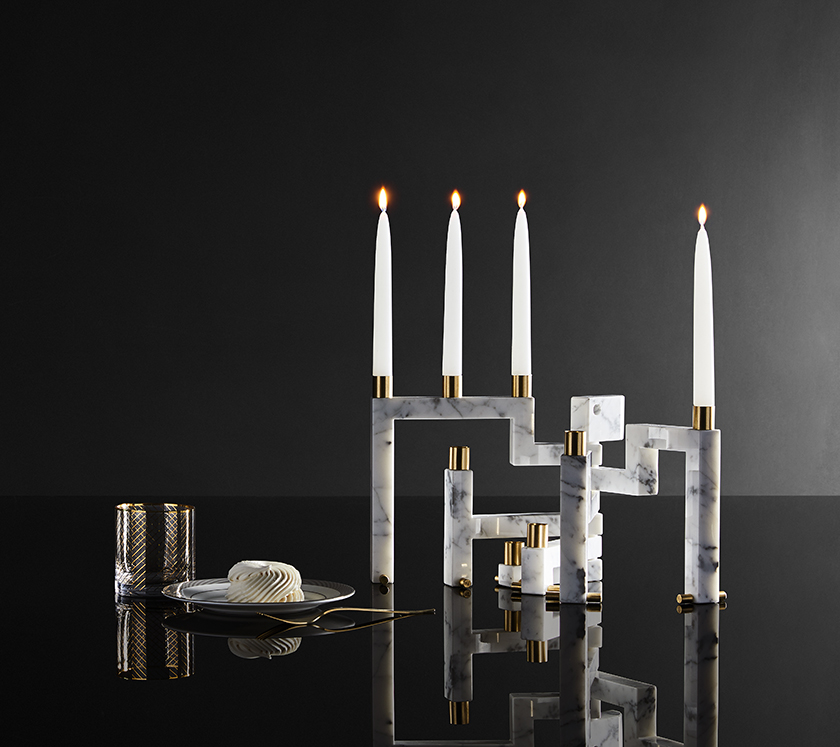
Candleholders, vases and a centerpiece are a tribute to the Italian art and architecture that inspires their form and character.
The Vestalia candleholder boasts the natural elegance of the most precious marbles, from Carrara White to Carnico Gray and Imperial Green.
A complex process of water-jet carving, entrusted to historic Venetian ateliers, brings out the stone’s edges and veining.
Their design, rich in tactile emotions and interactive possibilities, makes them objects of compelling sculptural presence.
Photo by Matteo Imbriani.
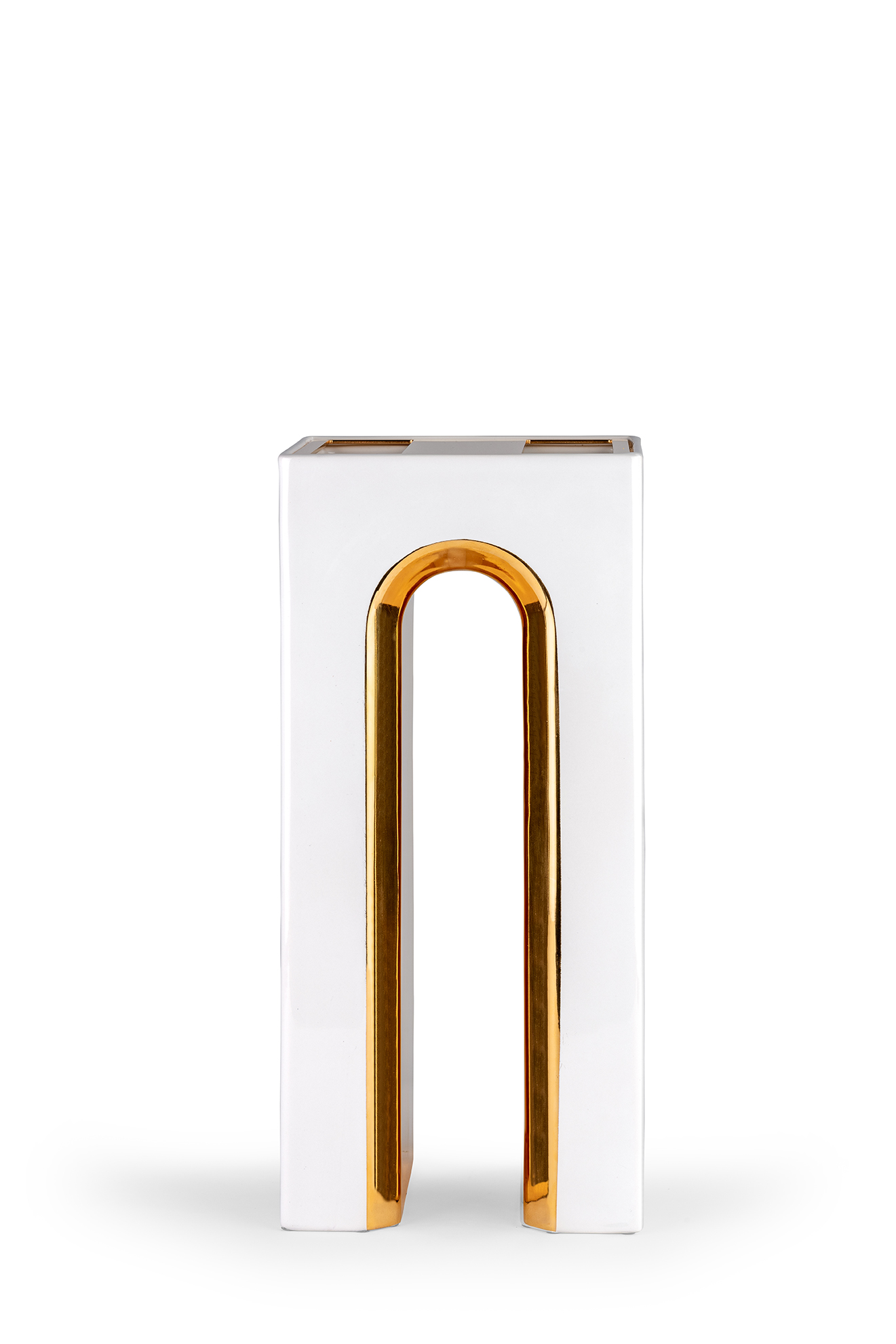
The arched ceramic vases Marcello, Massimo and Vittorio offer a subtle allusion to Italy’s Palladian villas and palaces and to the perspectives of Metaphysical art.
The detailing in precious 24k gold or platinum creates reflections of light and motion in perspective.
The pure white of the surface showcases the precious glaze finish and the imperceptible differences in intensity that come from handmade artistry.
Left photo: Marcello; Right photo: Massimo
Both photos by Giacomo Maestri.
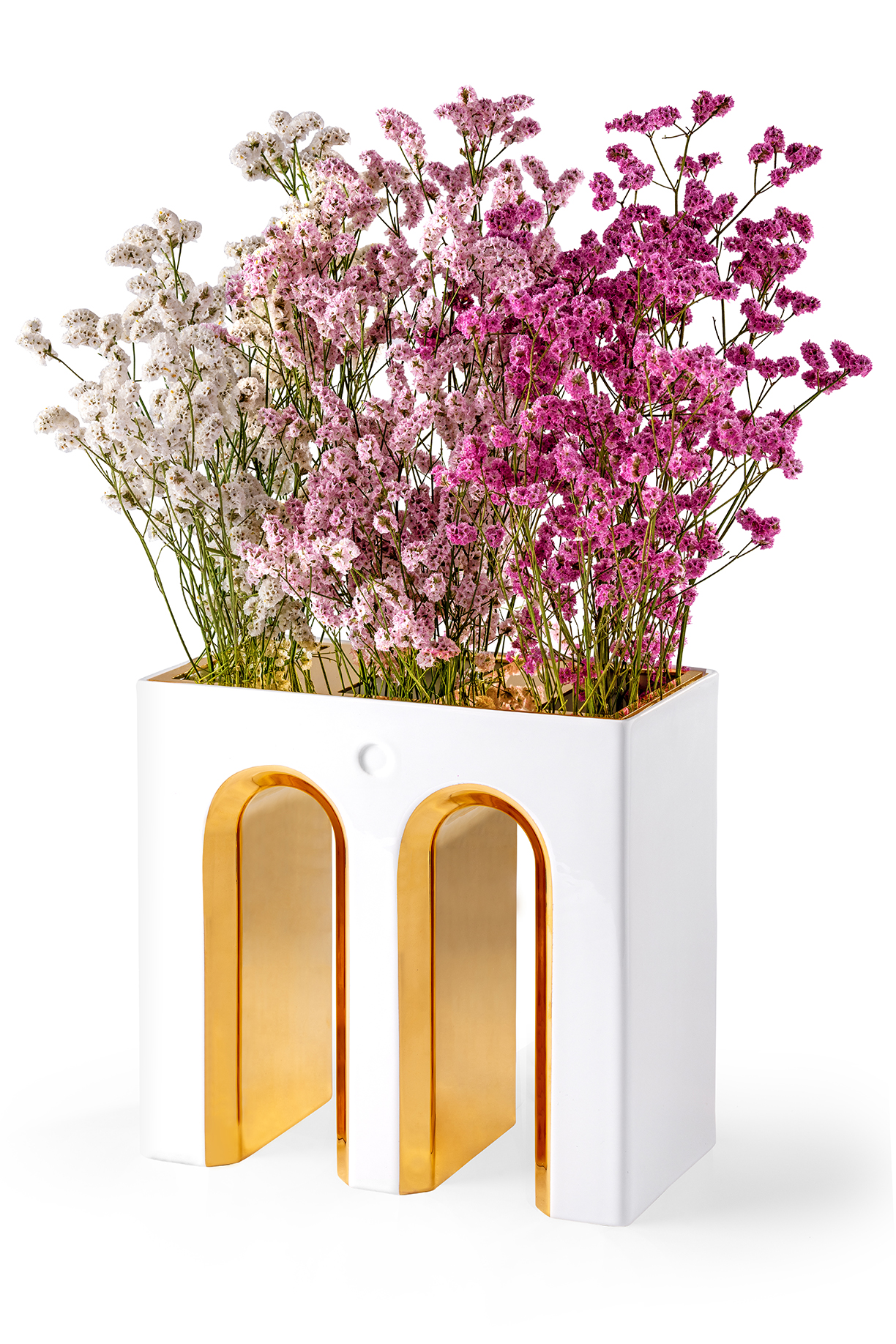
The beauties of artisanal ceramic return in the Sophia table centerpiece, inspired by the great piazzas of the città d’arte, Italy’s “Cities of Art.”
A meticulous study in proportion, Sophia presents itself as a scale model of the arches and porticoes of Renaissance architecture.
The result is an abstract geometric form, rich in sensory character and vibrant with luminous details that enrich the pure white of the ceramic.
Photo by Matteo Imbriani.
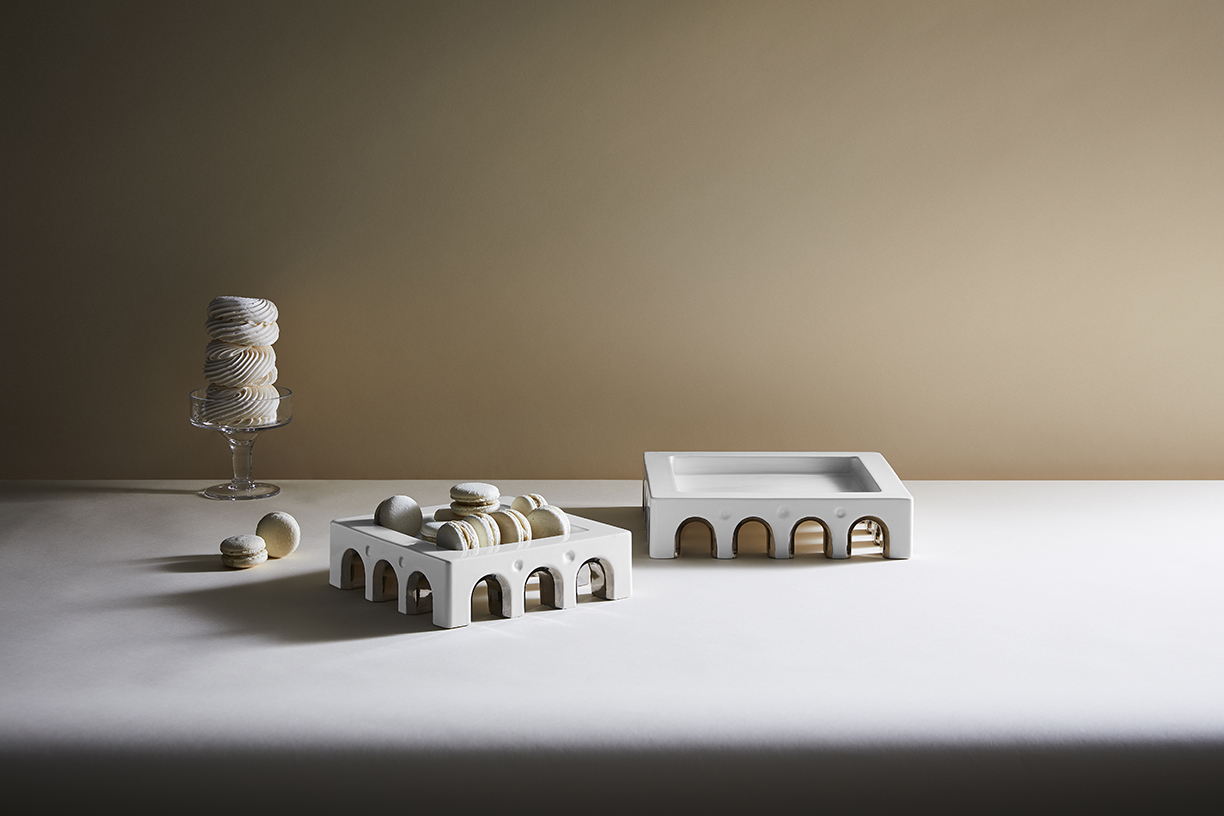
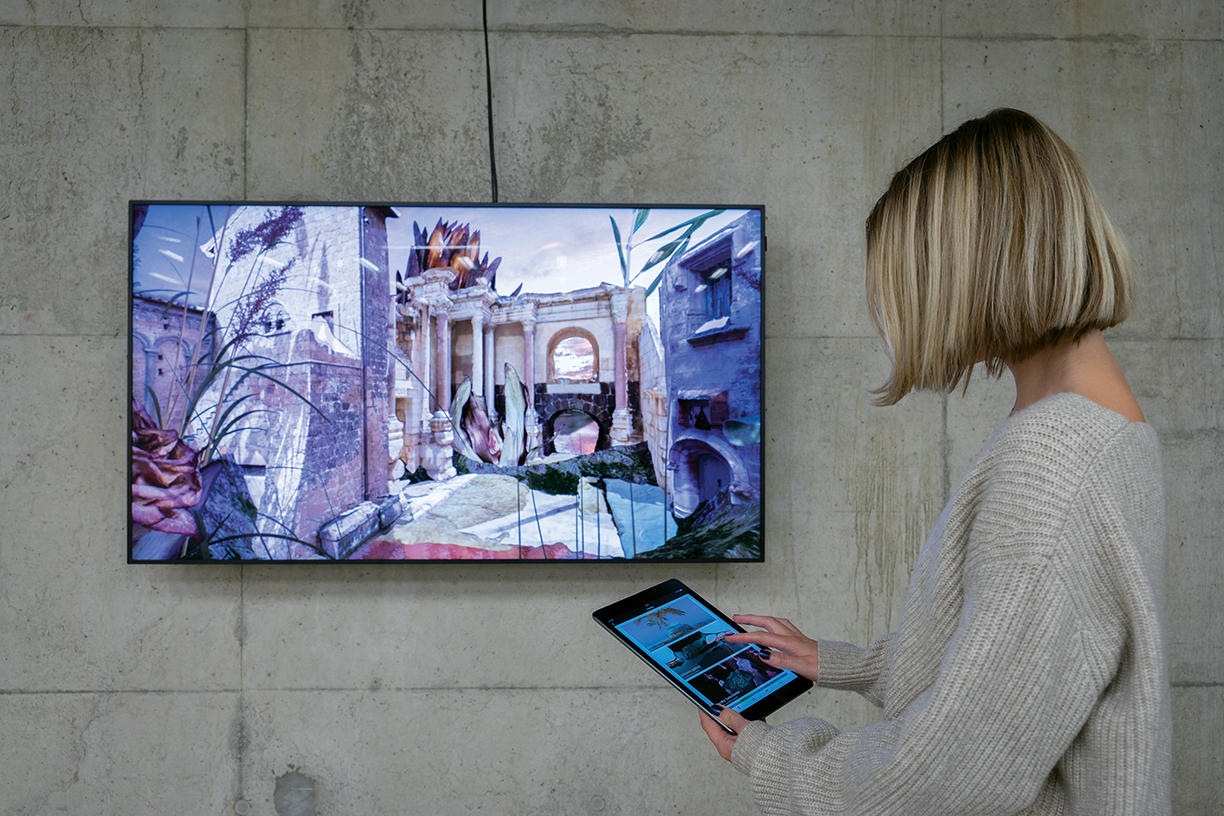
Photo courtesy Niio.
Smart technologies and artificial intelligence are changing the way we consume art.
While many treasured works of art are safely contained in notable museums or in the homes of experienced collectors, a new tide is cresting along the shores of the art curation field with the influx of digital art.
Digital art, more widely known as new media art, is an interesting sector of the art industry to define, even for Beryl Graham, who is a professor in New Media Art at the University of Sunderland. She notes that the roots of this art form have drawn inspiration from a range of movements, from conceptual artwork to video art, which also began in the 1960s.
“It’s broadly digital but [it’s also] the kind of art that works in different ways in different kinds of behaviors,” Graham notes. One fascinating example would be an exhibition of software art in which the software, sometimes even artificial intelligence-based artwork, can learn and grow on its own. Graham explains that an artist might start a piece of software and watch it evolve, perhaps give it a virus and watch, showing to the audience that the “end point isn’t quite under the control of the artist.”
Magdalena “Magda” Sawon, owner of the contemporary art gallery Postmasters Gallery in New York, says that the digital age has only heightened the senses of curators and artists, who are traditionally at the forefront of new developments in culture and technology.
“Technology is a tool,” she notes, “it is also a moving target and changing constantly. The question is to be aware of new developments and adapt it intelligently to one’s needs and benefit.” Fittingly, as artists have been harnessing the power of technology within the art industry, curators and galleries have had to “keep up with the times,” and embrace digital forms of artwork and the systems and methods in which they are displayed.
Donna Holford-Lovell, director of The North East of North festival (NEoN), notes how the incorporation of interaction and participation into art displays appeals to today’s technology-savvy audiences that have been gradually reinvigorating focus on the digital art world.
“The idea of ‘curation’ has become ubiquitous and our audience is seen to be curating many aspects of their own lives,” Holford-Lovell says. NEoN is an organized event that aims to advance the understanding and accessibility of digital and technology-driven art forms by having the artist and curator work together to translate “the spectacle of experience,” via digital platforms within physical spaces, like virtual reality, artificial intelligence, and even social media.
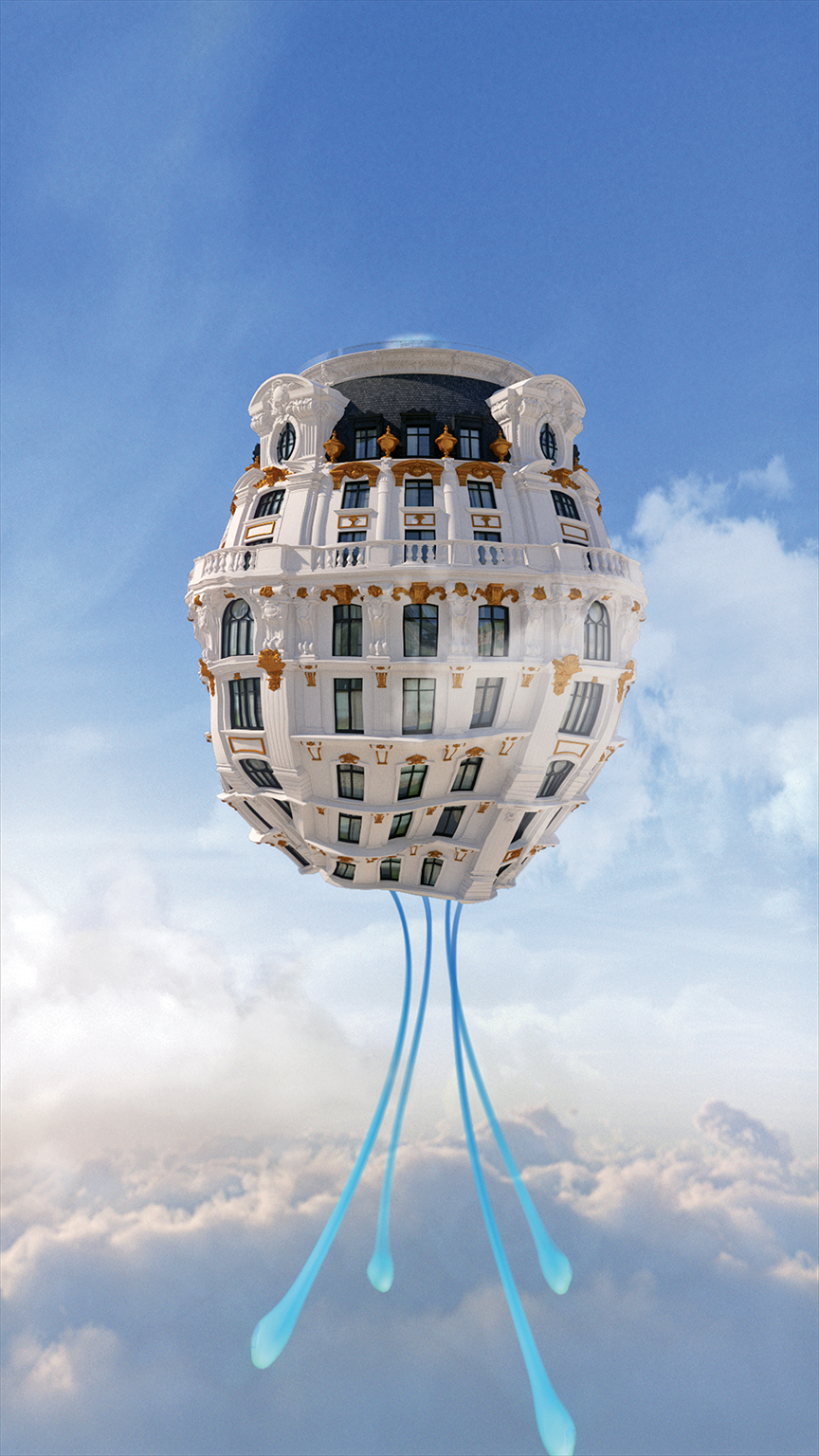
JONATHAN MONAGHAN (US)
The Phoenix and the Medusa (2018), Video, 7 min 69 sec, Edition of 30, Niio Commission Series.
With systems and platforms, from artificial intelligence to online-based forums, both artists and curators now are developing larger platforms and databases to contribute toward. As well as an educator, Graham is co-founder and editor of the Curatorial Resource for Upstart Media Bliss, or CRUMB, a resource for curators of new media art that aims to help overcome any challenges presented from this rise in digital art, from installations to networks of artists and individuals versed in these practices.
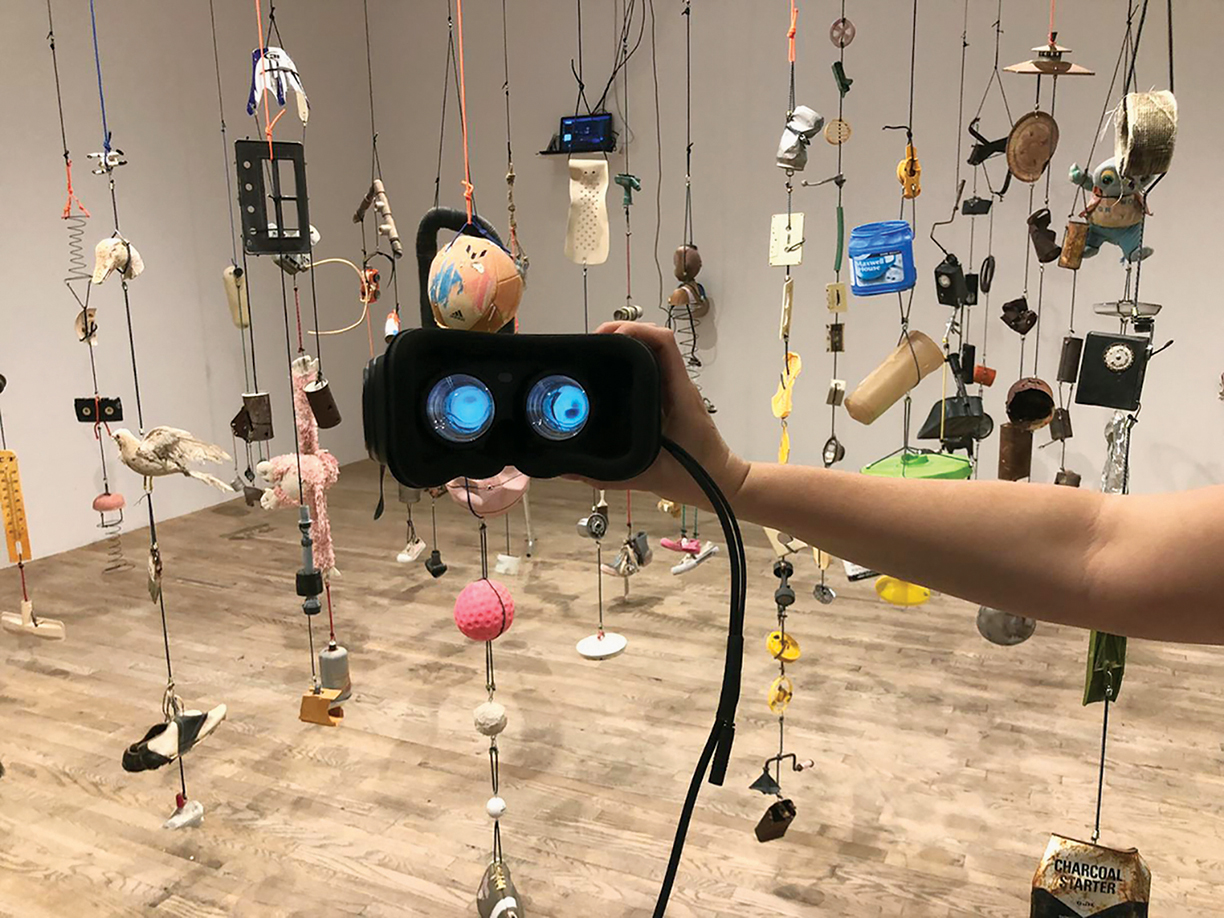
PERRY HOBERMAN
Suspensions (2018), VR and mixed reality installation, Postmasters April 2018.
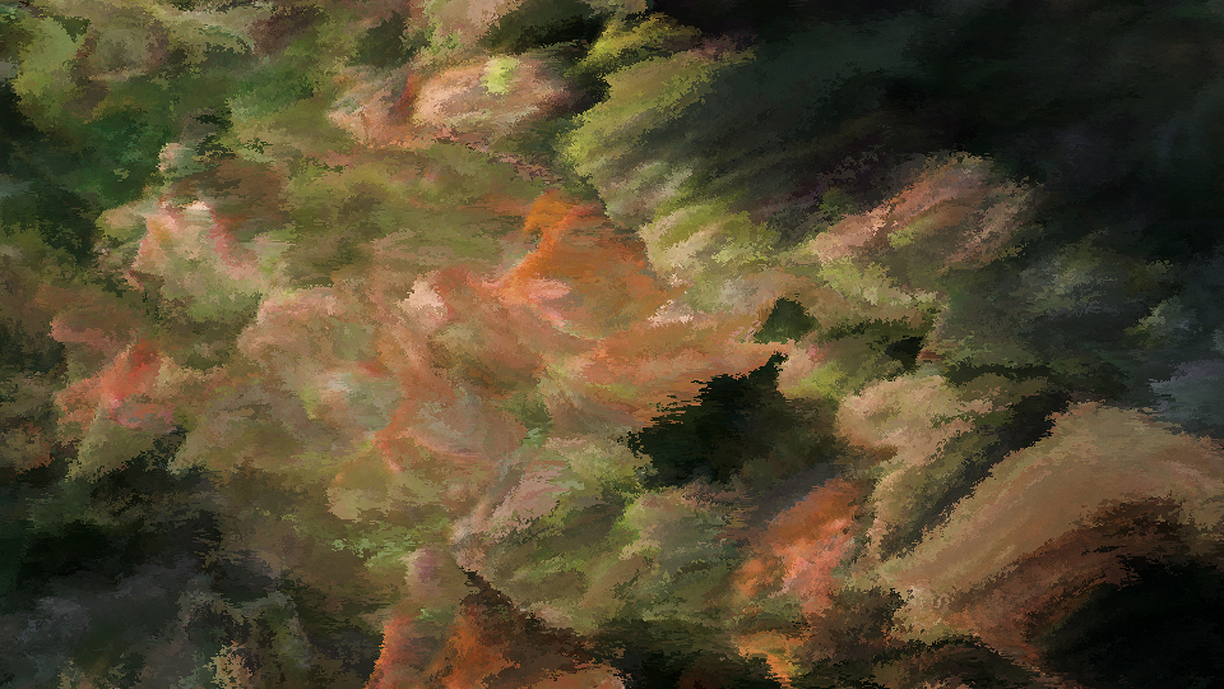
QUAYOLA (UK)
Camouflage (2018), Moving Image, 6 min 4 sec, Edition of 30, Niio Commission Series
On the luxury spectrum of art curation, Niio is a brand integrating digital art and technology-driven forms of collection and distribution that surges past the limitations of traditional artwork. Niio is an art and tech company aimed to enable the exposure of digital artwork in a time that to the company feels like a fourth industrial revolution.
“Art has always reflected the world we live in,” says Rob Anders, CEO and co-founder of Niio, “and artists will create their art with any tool they can access.” In today’s world, that tool has come to be technology. Anders, who understands the eclectic background of digital art from conceptual and video art, wanted to help designers and architects best fit homes with the art of today, and after speaking with top galleries he found that what’s really needed are new models of both the business and technological side that reach a broader audience — even better: one with a subscription.














